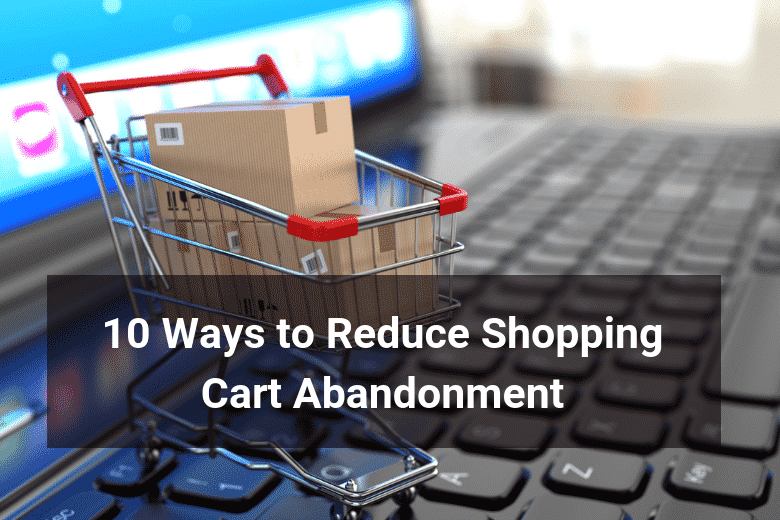Despite your best efforts, some shoppers will abandon their cart before completing their purchase.
Data from the retail marketing firm Listrak shows the average rate of cart abandonment is 80 percent.
That’s 4 in 5 shoppers leaving your site before confirming a purchase.
How can you minimize shopping cart abandonment for your e-commerce business?

1. Display security logos
Customers are more likely to complete their purchase if they feel secure on a site.
Make sure your site has an active SSL certificate, even if a third party such as PayPal handles your transactions.
Always place security badges and information on your site to reassure your visitors.
2. Make it pretty
Instead of only having text for descriptions, show clear images and provide thumbnails of items for sale.
Use responsive design to adapt your site to different screen sizes.
An ugly site is a turn-off for the majority of online shoppers.
3. Avoid registrations
Forcing shoppers to register to complete their purchase increases abandonment, especially if the sign-up process is tedious.
Allow guest checkouts and simplify registration by requesting minimal information — an email address and name is enough.
Build your database later, and give shoppers the option to complete their profile using a Twitter or Facebook login.
Offer extra features to registered shoppers, such as wish lists and saving selections for later checkout.
4. Simplify guest checkout
Guest checkout lets shoppers make a purchase without creating an account on your site.
Give them the option to register and complete their profile later or on their next purchase.
5. Display your contacts
Providing contact info reassures shoppers.
Make sure shoppers can contact you by telephone, email and post.
Add a chat box on the checkout page for instant responses to questions.
6. Guarantee prices and refunds
Thirty percent of shoppers will abandon their purchase if the final price is higher than the one displayed, usually because of postage costs and sales tax.
Make your prices clear and simple. Offer a simple and practical refund policy.
Remember to display testimonials of satisfied customers to reassure your shoppers.
7. Offer multiple payment options
The more payment options you offer, the less likely shoppers are to abandon their purchase.
PayPal and Google Wallet are two of the most popular payment options in e-commerce, both of which allow you to take credit card payments through their systems.
If you can handle the hassle, allow your shoppers to use alternatives such as Payza and Skrill, or even alternative currencies such as Bitcoin.
8. Give incentives
In a study carried out by Deloitte, 70 percent of shoppers are likely to transact with e-retailers who offer free shipping.
Include free shipping for orders that exceed a certain value.
9. Use email recovery campaigns
Create personalized email reminders for shoppers who failed to complete a purchase.
Notify them of their abandoned cart and motivate them to complete the process.
Provide a summary of items they abandoned and incentivize them to take prompt action.
10. Send Reminders
Shopping cart abandonment is a hard pill to swallow, because these shoppers showed that they intended to make a purchase, but never did.
However, there are a few things businesses can do to prevent the loss of a sale proactively.
Abandonment is highest on mobile devices — as high as 86% — so mobile optimization is imperative.
You can also offer incentives to get your customers to return back to their carts to complete a purchase by using reminder emails, which generally get a good 45% open rate.
To learn more about how to stop shopping cart abandonment, check out the infographic below:

The 5 Minute Guide to Scaling Your Shopify Shipping Strategy
Automate Your Fulfillment & Shipping
Win With the Best Practices of Online Store Owners
- Empty Carts: Drilling Down to The Real Reasons For Shopping Cart Abandonment
- 5 Shipping Tips That E-commerce Beginners Must Know About
- Borderfree E-commerce Competitive Pricing Strategies?
- 5 Ways Technology Is Disrupting The Shipping Industry

Ready To Upgrade Your Logistic Solution?
Speak to Floship ecommerce logistic consultant about improving your global support chain today




